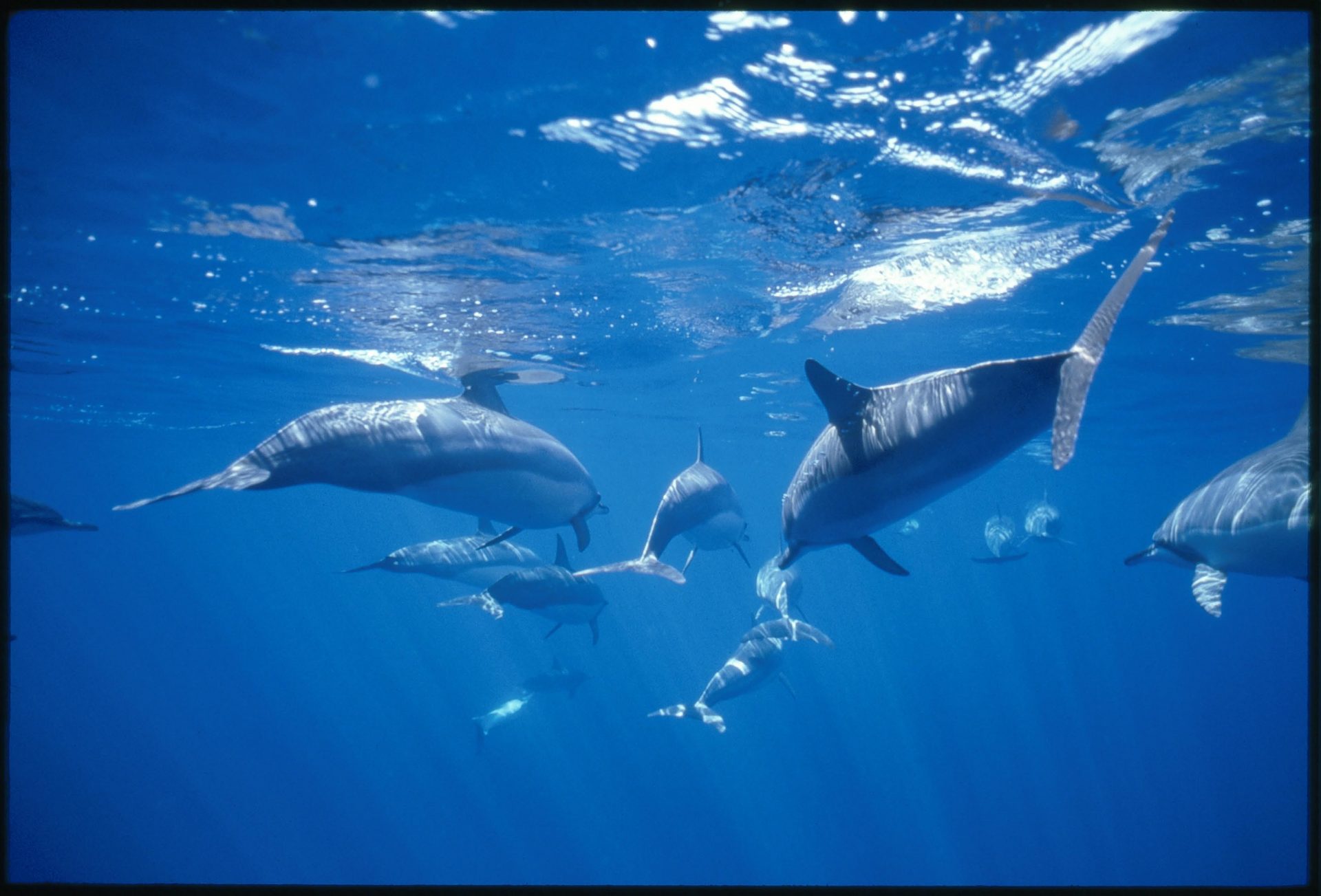Dolphin Watching Done Right!
We take small groups far from the beaten path to experience some of the worlds most pristine reefs and landscapes. The island of Lana’i is home to at least three different species of dolphin. We are often met by either spotted or spinner dolphins. The Island of Lana'i offers dolphin watching done right.We occasionally encounter the more rare bottle nosed dolphin. We’ve compiled a bit of information about each dolphin species that you are most likely to see. You can use this list to brush up before you experience these beauties first hand. All of our Lana’i snorkeling trips leave from Maui’s Lahaina harbor. If you are going to be on Maui between December and May don’t forget to book a whale watch.
Hawaiian spinner dolphins
At dusk Spinner dolphins travel offshore to feed. The spinner dolphins of Hawaii live in family groups. Within these groups mothers and calves form especially strong bonds. Vocalizations of spinner dolphins include whistles which may be used to organize the structure of the school. There are also burst-pulse signals and echolocation clicks. The spinner dolphin has a 10-month gestation period and mothers nurse their young for one to two years. Spinner dolphins are well known for their acrobatics and aerial behaviors. A spinner dolphin comes out of the water front first and twists its body as it ascends in the air. You can’t miss the resounding splash as it hits the water landing on its side. A spinner dolphin can make two to 5.5 spins in one leap.
Pan tropical spotted dolphin
Spots are the key defining characteristic in the adult dolphins. Immature individuals are generally uniformly colored and can look like a small bottle nose dolphin. This dolphin has a long thin beak and the upper and lower jaws are darkly colored. The chin throat and belly are white to pale grey with a limited number of spots. The flanks are separated into three distinct bands of color with the lightest at the bottom, followed by a thin grey strip in the middle of the flank and a dark grey back. The tall dorsal fin is similarly colored. The thick tail stock matches the color of the middle band. The pan tropical spotted dolphin is very active and is prone to making large splashy leaps from the sea. Bow riding and other play with boats is common. They are often the first to greet our tours!
Bottle nose dolphins
Bottle nose dolphins live in groups of between 10 and 30 members we call pods. In reality group size can vary from single individuals up to more than 1,000. Their diets consist mainly of fish. Dolphins often work as a team to harvest fish schools but they also hunt individually. Dolphins search for prey primarily using echolocation, which is similar to sonar. They emit clicking sounds and listen for the return echos to determine the location and shape of nearby items including potential prey. Bottle nose dolphins also use sound for communication including squeaks and whistles emitted from the blowhole and sounds emitted through body language such as leaping from the water and slapping their tails on the water surface.

